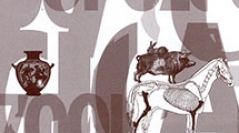

 Anthropozoologica
48 (1) - Pages 125-134
Anthropozoologica
48 (1) - Pages 125-134The reconstruction of Stone Age subsistence in Finland is almost solely based on the study of burned bone assemblages from settlement sites. Seal bones dominate Stone Age refuse fauna while bird and fish bones are almost absent. The problem of the absence of bird and fish bones has been acknowledged, but so far the dominance of seal bone has been taken as a sign of (specialized) seal hunting as the main subsistence activity. In this article we question the use of archaeological refuse fauna as the single basis for the study of hunter-gatherer subsistence. We conducted a series of experiments to test how interspecies differences in bone characteristics may bias our current understanding of Finnish prehistoric subsistence. Our preliminary results clearly show interspecies differences in bone combustion qualities and in bone preservation. Further structural and densitometric analyses reveal significant differences in the medullary cavity of seal vs. terrestrial mammal bones. Our results also open new perspectives concerning the use of bone as an additional fuel source in prehistoric hearths.
bone as fuel, prehistoric subsistence, experimental archaeology, Finland, refuse fauna.